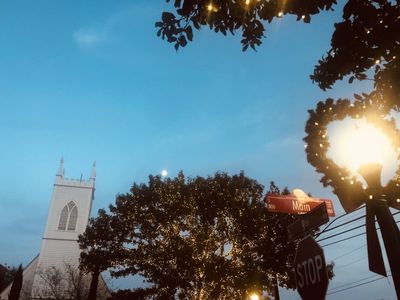Email newsletters have been around a while, but they’re now a Thing. It’s where many internet-based companies and creatives channel their energy, and for good reason: we don’t control or own our social media feeds, which means we have very little control over whether the messages we care about get seen — but with email, people are giving permission to talk with them via their own inbox.
Even deeper for me, as a writer and podcaster, is how email allows me much more freedom, space, time, and focus to talk directly with those who’ve said they want to hear from me. And as a subscriber and reader of certain newsletters, I can much better control what I read when it comes into my inbox versus, say, my Twitter or Instagram feeds.
And if I don’t like what comes my way — whether it’s the content itself, or how it’s delivered (too long, too frequent, too sales-y), I can unsubscribe with a simple click.
I’m a big fan of newsletters.
But because they’re so everywhere these days, it’s overwhelming to subscribe to everyone’s list — that doesn’t do anyone any good. Your inbox is bloated, and the sender’s letter doesn’t get read while still having to pay for you to be on their list (that’s a real thing). The best approach is curation.
While my reading habits ebb and flow, here are newsletters that currently make my shortlist — and therefore, my inbox.
1. Useletter, by Amy Lynn Andrews 🖇
Amy’s weekly Saturday letter is one of my very few go-to emails I open religiously, and one of the few I subscribe to specifically about my line of work. If you want short, to-the-point-yet-friendly thoughts on running your own small, nimble, internet-based business with a sprinkling of grace and humanity, Amy’s your gal. She’s the best in the business.
2. The Examined Life, by Seth Haines 🔦
Seth is a friend and he’s one of my favorite current thinkers. I love his perspective on all sorts of stuff, but especially addiction — the idea of misplaced adoration, and that we’re all prone to addiction to something. His words are a reset button for my perspective.
Like my newsletter, his new one lives on Substack, which means there’s both a free and a paid version. Naturally, I recommend paying people whose work makes your life better, so that they can continue to do what they do. I’m a paying member of his newsletter, which means this month I’ll have access to his series on silence.
3. Pantsuit Politics, by Sarah Stewart Holland & Beth Silvers 🌎
I just love these women. Yes, they cover politics (mostly on their podcast of the same name), but they insert a heavy dose of humanity in every issue, sharing more than their takes on politics and the news. But they do that, too, and they do it well — this duo gives us the nuance we need when the world feels more and more polarizing. I’m a huge fan of what they’re doing for the rest of us.
4. Sectional Healing, by Knox McCoy 🛋
You already know he’s hilarious if you listen to him on The Popcast. But he’s also really thoughtful, and I personally believe it’s in his writing where he shines. His letter includes plenty of GIFs alongside plenty of deeper insight, which both surprises and affirms in solidarity many of my own thoughts. Knox’s speciality lies in the intersection of faith and pop culture, and if that’s your thing, his newsletter will be, too.
5. 3-2-1, by James Clear 💪
My adoration for James is no secret (his book continues to be an annual read for me), and his newsletter fits the bill with what I look for most in a regular email: short, to the point, and chock-full of truth nuggets. Every issue includes three ideas from him, two quotes from other people, and one question for you to ponder.
If you’re a fan of my own 5 Quick Things, I think you’d like James’ approach.
6. The Skimm 🗞
I prefer weekly newsletters over daily, but this one’s — wait for it — skimmable. Written by women, this quick email hits your inbox every weekday morning for a summary of what’s in the news. It’s a great way to stay informed without feeling overwhelmed. I do wish they’d create a weekly version, because I’d sign up for that in a heartbeat, but alas, this is the next best thing. If I don’t feel like reading an issue, I simply archive and move on.
7. The Daily Good 👍
Here’s another newsletter I wish were weekly, but thankfully it takes only about 30 seconds to read, Monday through Friday. Sent by the people behind The Good Trade, they share, in as few words as possible, something to listen to, visit, shop at (they feature only ethical brands), and read. It’s a nicely curated, quick read.
8. Girls’ Night In 🛀
An enormously popular newsletter, it’s a weekly (yay!) letter sent out Friday mornings; so, if you get my 5 Quick Things, it hits your inbox around the same time as mine. Their angle is self-care for women, but it’s more than that — it’s more about ways to care about what you care about most. This means, even though it’s a bit long, you can skim and read easily what’s important to you, then leave the rest. I do enjoy their upbeat-yet-not-obnoxious voice.
9. Bowerbird 🦜
When you want a quiet, reflective email in your inbox, you should look to Emma Marsh’s Bowerbird, because it’s just that. Emma attended last summer’s Literary London, and I loved hearing her quiet, purposeful, Australian voice amongst the group. She one of those types where when she says something, she means it — and that’s what Bowerbird does. She collects thoughts, and then she shares them with us.
10. The Commonplace 📚
It’d be weird to curate a list of my favorite newsletters and not include my own, right? On Friday mornings, I send an email called 5 Quick Things, where I share five things I either created or loved from the week. But on Mondays, I create a space just for those who’ve chosen to support my work as a paying subscriber with a safe space for us to talk about all sorts of things — what we’re learning from books we’re reading, the best things to watch and listen to while we’re folding laundry, what’s hard and good in our life at the moment, and of course, what things are currently making our own good lists.
Then occasionally, I also share goodness I don’t share anywhere else: longer-form essays, WRLD at Home podcast episodes, interviews with friends, and more. All of it fits the intersection of what I like to talk about the most: stories and travel, work and play, and faith and questions.
Blogs are still a thing, yes, and I do love reading quite a few. But email newsletters are even more personal, more voice-driven, and as a writer of both, I’ll be honest — an email feels safer. People have opted in to hear your words, so as a writer you’re more vulnerable, more honest, less afraid.
I love the direction of platforms like Substack, where writers can share some of their words for free, to anyone who subscribes, then go deeper with the friends who’ve chosen to support a writer’s work. That’s such an important shift in the internet’s landscape, I believe — if we want to keep this place lovely and dumpster fire-free, paying writers for their hard work is where it’s at.
Never be afraid to unsubscribe what’s not for you, either. I continue to open and enjoy the newsletters I do because I curate often. If a newsletter doesn’t resonate with me within a few issues, I click that unsubscribe button, guilt-free. It’s truly better for the sender, too, I promise — and I include myself there. I’d love you to subscribe to my newsletter, but if after a few issues you decide it’s not your thing, please do unsubscribe. No hard feelings whatsoever.



